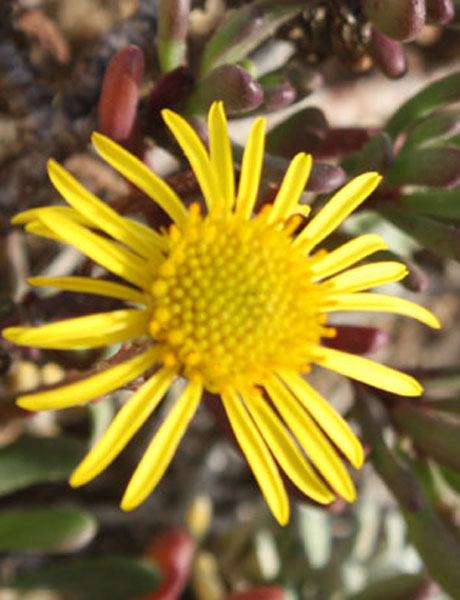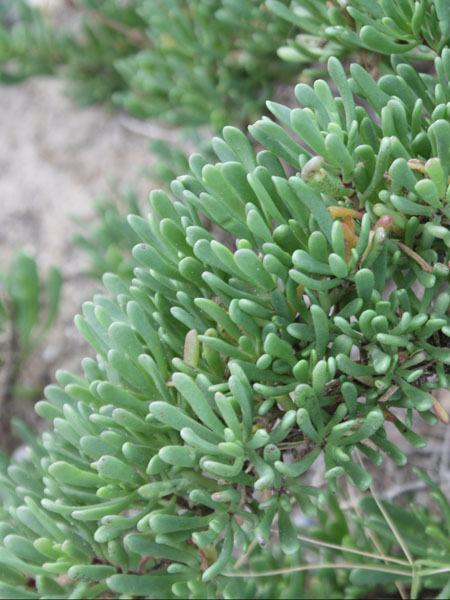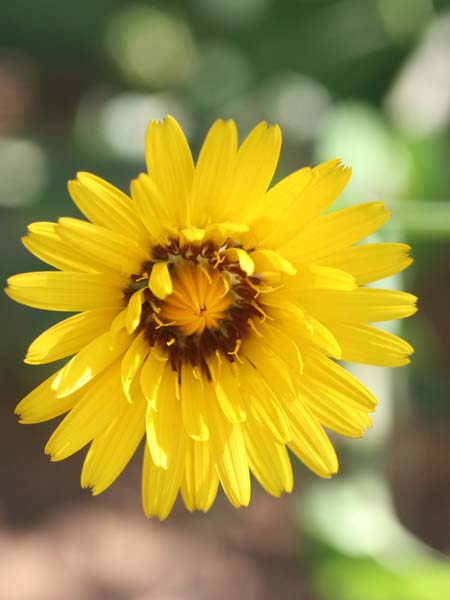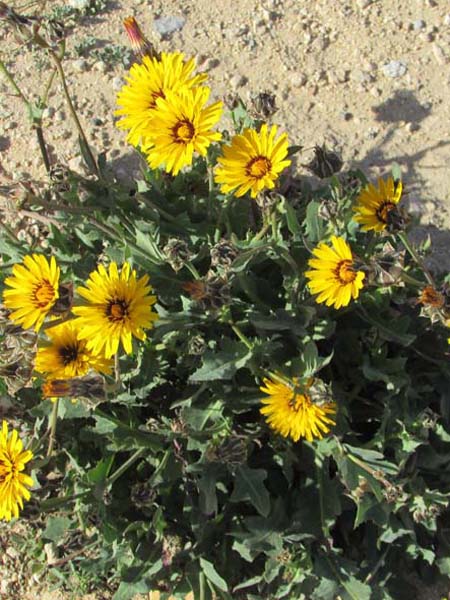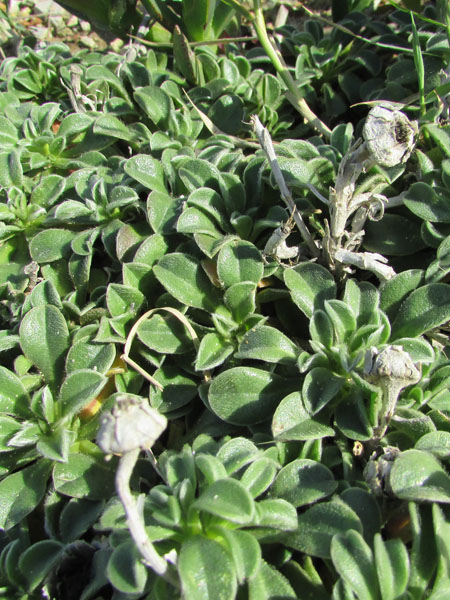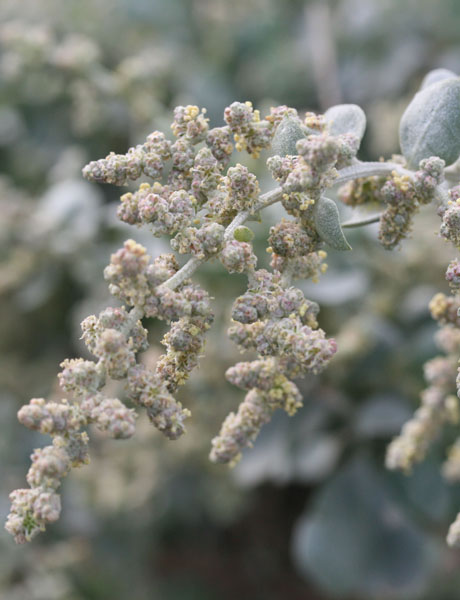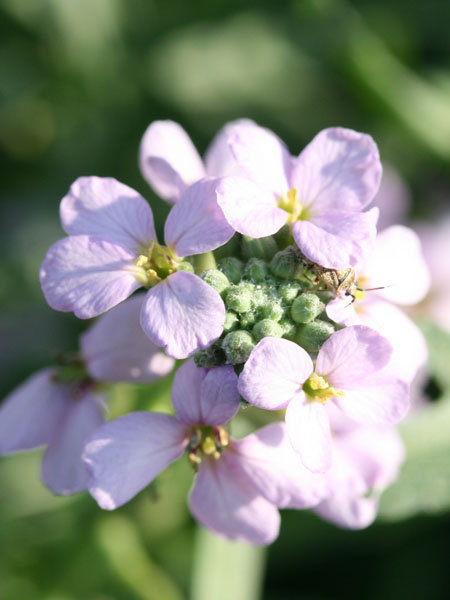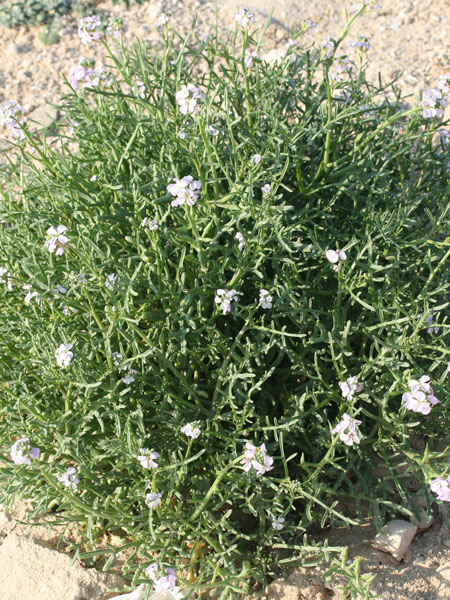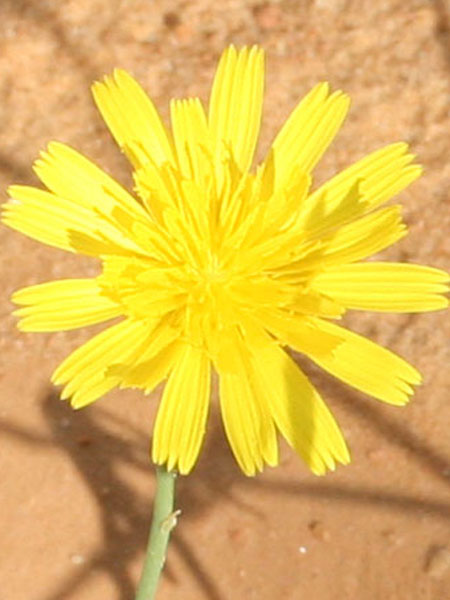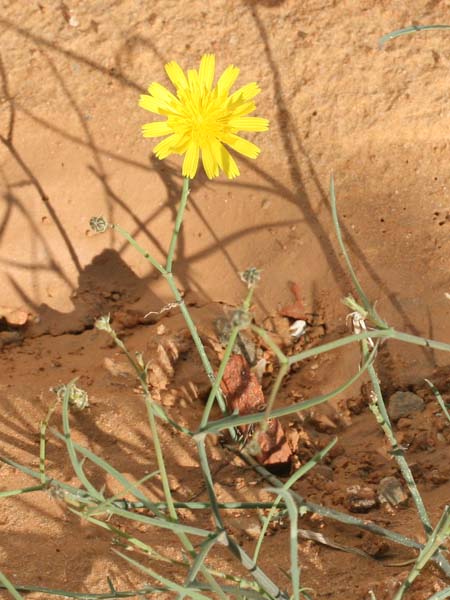Launaea angustifolia
Kingdom : Plantae / النّباتات
Division : Spermaphyta / البذريات
Clade : Magnoliophyta or Angiospermae / مستورات البذور
Class : Eudicotyledoneae / ذات الفلقتين
Order : Asterales / رتبة النّجميات
Family : Asteraceae [Compositae] / الفصيلة النجميّة أو المركّبة
Genus : Launaea
species : angustifolia
Chromosomes: 2n=16
Protologue
(Desf.) Kuntze, Revis. Gen. Pl. 1: 351 (1891) Sonchus angustifolius
Synonyms
Sonchus angustifolius Desf., Fl. Atlant. 2: 225 (1799). Zollikofera angustifolia var. squarrosa (Pomel) Batt. in Batt. & Trab., Fl. Algérie Tunisie 216 (1905). Launaea angustifolia (Desf.) Muschl., Man. Fl. Egypt 2: 1059 (1912). subsp. angustifolia Launaea angustifolia var angustifolia Le Houér. sensu P.-A. fL. Tun. 2: 1113 (1981).
Common names
Tunisia Arabic English French Tamazight
غرّيم
الحوة ضيقة الأوراق
Toxic
no
Edible
yes
Latex
no
Botanic description
Genus description
"Homogamous capitula, with yellow flowers ligulate hermaphrodite. Cylindrical gold camped with nested bracts, usually membranous at the edges. Naked receptacle. Akenes generally linear, prismatic or slightly compressed, with little or no attenuation at the top, with longitudinal fluted sides; peripherals often velvety pubescent or rough. White egret sessile, many bristles. Dichotomous plants, with glabrous leaves often whitish on the tips of the teeth and lobes.
Species description
"Low plant with short and diffuse stems.
Stems diffuse short 10-25cm Leaves oblong in their periphery, pectinated linear strips distant and toothed, the cauline ones amplexicaules. Flowers Capitulum globular, solitary, bent. Fruits Ackenes 3 mm, the outer very hairy, winged-fimbriated on the corners.
Botanic References
Pottier-Alapetite G. (1981). Flore de la Tunisie Angiospermes –Dicotylédones (Gamopétales première partie). Imprimerie Officielle de la République Tunisienne (Eds), 1113 p.
Biology
Life form Biennial Type form Therophyte Photosynthesis C3
Phenology
Blooming
JanuaryFebruaryMarchAprilMayJuneJulyAugustSeptemberOctoberNovemberDecember
Fruiting
JanuaryFebruaryMarchAprilMayJuneJulyAugustSeptemberOctoberNovemberDecember
Map Localization
Ecology
Adaptation Spread in the desert regions, alluvium wadis, gypsophyte plant. Salt bladder yes Invasive no
Geographical distribution
Localization Biocimatic stage Annuel pluviometry (mm) GPS
General uses
Edible plant used to make fresh salads or to prepare couscous with the leaves of the fennel. Pastoral plant highly apetized by sheep and camels.
Medicinal uses
"In "Chorbane" (Mehdia), it is used to relieve stomach upset and it has an hypoglycemic proprety.
NOTE : This website is not that of herbal medicine and assumes no responsibility for the negative effects of the use of plants. Seek advice from a professional before using a medicinal plant.
Systems / Organs / Effects
Dispersion mode
- Anemochory (wind)
Germination
Duration
Image
Description of the seeds
Form External structure Ornamentation Type of seed Average length of 10 seeds ± (mm) Average width of 10 seeds ± (mm) Average thickness of 10 seeds ± (mm) Average mass of 100 seeds (g)
Test results
TPC DPPH ABTS+ FRAP Year mg GAE g-1 MS CI50 g ml-1 CI50 g ml-1 CE50 g ml-1 47.58± 1.54 16.82± 0.25 16.28± 0.35 205.59± 3.50 2016 Total Phenols content(TPC), Anti-radical potentialities against (DPPH, ABTS), Ferric reducing antioxidant power(FRAP)
Molecules : ADN / Proteins
Chromosomes : 16 Uniprot NCBI
Chemical composition
Name









